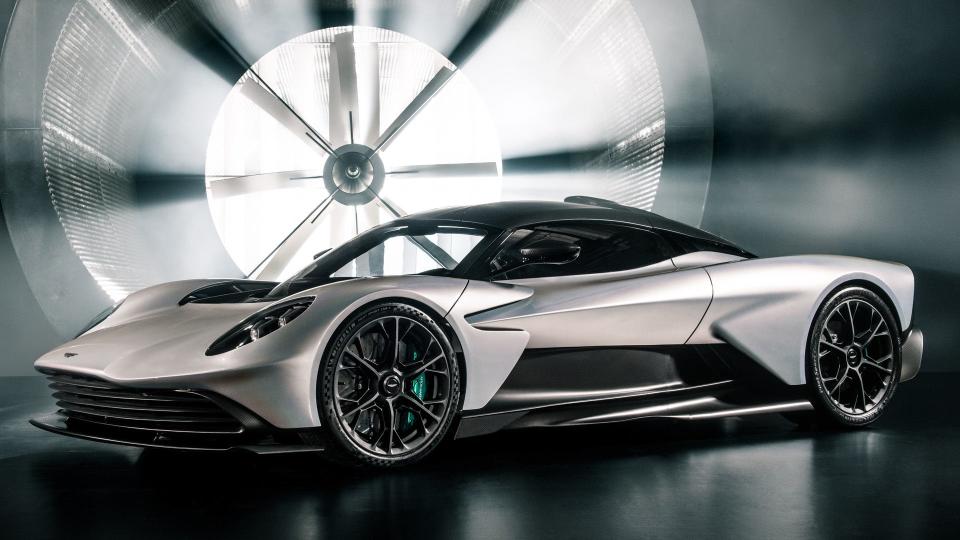Aston Martin Valhalla: A Mid-Engined Beast With Twin-Turbo V8, 3 Electric Motors, 998 HP

We first saw the Aston Martin Valhalla in concept form all the way before the pandemic in 2019, back when it was called the AM-RB 003. Positioned below the halo-spec Valkyrie, it's a 998-horsepower hybrid monster with three electric motors and a fire-breathing twin-turbo V8. It's been a long road to production, but Aston Martin is finally showing us the final version of the car. And by the way, only 999 of the carbon-tubbed supercars will be built, with production starting in 2024.
The Valhalla is expected to cost around $800,000. To justify the price beyond the spec sheet, Aston says the car has been developed extensively since the concept was revealed with help from its eponymous Formula 1 team. Drivers Fernando Alonso and Lance Stroll—whose father Lawrence bought a controlling stake in the British automaker in 2020—are said to have aided in development. The car is likewise said to use many F1-adjacent technologies, like a DRS-style wing as well as active aerodynamics that are not allowed in the racing series.




At the core of the Valhalla is a 4.0-liter flat-plane V8 engine, which the automaker says is bespoke to the car. It's combined with three electric motors, two of which are at each front wheels, while the third is mounted to the transmission. The latter provides additional power to the rear wheels and acts as a starter/generator. This means the Valhalla is all-wheel-drive and capable of front-axle torque vectoring. The front motors are also used to reverse the car, which means the actual transmission mounted to the combustion engine has no reverse gear. The automaker did not state the power split between the ICE power unit and the electric motors, however, there's no doubt that the vast majority of the power comes from dead dinosaurs.

 Yahoo Autos
Yahoo Autos 